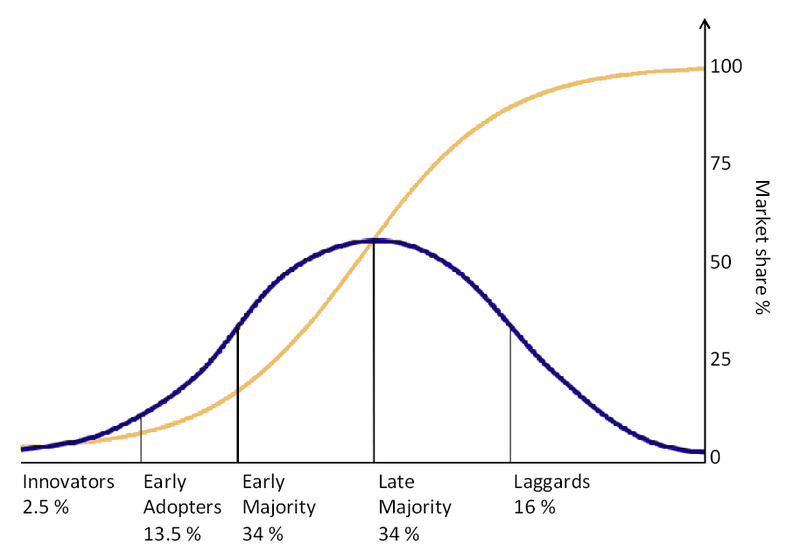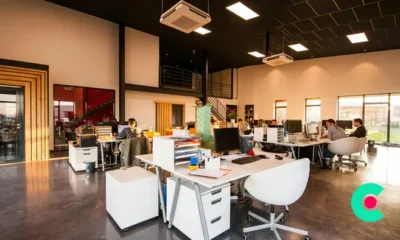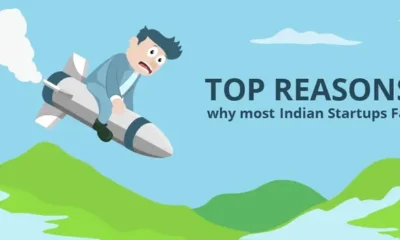Archives
#Seattle and #Bangalore: an Early Comparison of #Startup Cities

I spent a good few weeks in Seattle meeting entrepreneurs, investors (VC’s and a few angels) and visiting local accelerators.
While, still early, I formed some opinions based on my interactions and impressions. I initially thought I’d make a very comprehensive post on the pros and cons of both cities, their entrepreneurial talent, their support for startups and their investor biases. I felt though, that I had not given myself enough time to understand the Seattle area, so I will look at the two startup hubs more objectively in this post.
My impression though right now is that Bangalore is WAY ahead in all metrics and by a wide margin.
I am not comparing the Indian ecosystem to the NorthWest, just Seattle to Bangalore.
There are 7 categories of data points I want to highlight.
1. Events, meetups, support groups and inclusiveness of entrepreneurs. Support for entrepreneurial success stories with startup media will also feature in this category.
2. Support for early stage (seed) funding with angel investors and accelerators
3. Ability for entrepreneurs to attract talent to their ventures – both availability of talent and their willingness to join early stage ventures, access to good local universities who can keep providing great talent for startups
4. Growth support with Venture capital
5. Availability of mentors – entrepreneurs who have been there, done that and later stage company CEO’s who can guide new entrepreneurs
6. Early adopters – small businesses, consumers and larger businesses who are willing to try and then pay for new products
7. The X-factor – things that attract smart folks to be here – quality of life, infrastructure, food options, night life, commute, weather, etc.
1. Events & Meetups. It is no secret that I attend many events. Most on the weekends – Hackathons, meetups, technical review sessions, show and tells. Anything that’s remotely entrepreneurial attracts my attention. From Design Day (hosted at the Accelerator) to Construkt and from NASSCOM Product conclave to The Fifth Elephant. I love meeting entrepreneurs and learning about technology of all forms.
In this area, Bangalore is way ahead by a mile, primarily because of the grassroots efforts by some . I am very impressed with Kiran Jonnalagadda and the Has Geek, Shubhendu and VentureSity, Prashant and the folks at Startup Saturday and the multiple daily events for startup entrepreneurs.
The Seattle ecosystem has its share of events, most are technical as well, with visiting folks from the Bay area and other locations meeting every week and many adhoc meetups for entrepreneurs both on the east side of Lake Washington and the West side (Seattle city).
Bangalore though, has over 54 hackathons each year and the Seattle area has fewer than 30. Seattle has Startup Weekend though, which does a great job locally. Bangalore just has way too many entities helping organize Hackathons.
Startup press in Bangalore used to be dominated by online publications like YourStory and Pluggd.In, but I see the Economic Times, Times of India, Business Standard, Live Mint and Financial Express increasingly doing at least 2-3 stories daily on startups.
Seattle has Geek Wire and a few local publications, but the number aside, (which would be less than 1/2 the total blogs and press in Bangalore), the ecosystem at the earliest stages is just small.
Since Seattle has a population of about 3.5 Million people, compared to 8.5 Million in Bangalore, it is expected to be much smaller. If you look at the technical talent, Seattle has around 500,000 folks in the tech area, compared to close to 1 – 1.5 Million in Bangalore.
2. Early stage funding. Talk to any entrepreneur in Seattle (I met with over 30 in 2 events) and the familiar concern you hear is – there are too few risk-takers, few early stage investors willing to fund pre-revenue companies and a dearth of high net worth investors in tech.
That’s the same story you hear in Bangalore as well, but there’s a huge difference. I am sure the entrepreneurs in Bangalore dont realize how good they have it here, until they look at other ecosystems (the familiar comparison is to Silicon Valley).
It is very surprising to hear that Seattle has few risk takers, since over 50,000 millionaires are in the Seattle area – ex-employees of Microsoft, Amazon, Isilon, F5 networks, Expedia, Starbucks, and others. The only challenge is that most of them are fairly conservative and have stayed away from investments in early stage startups.
Bangalore has about 10,000 $ millionaires in contrast from Infosys, Wipro, etc., but many more from old school businesses. They tend to be largely conservative as well.
If you look at the angel groups, Indian Angel Network and Bangalore Angels, although folks that move slowly and demand a lot of entrepreneurs, both in terms of milestones and % of the company, they do get deals done, and dont charge entrepreneurs to pitch their ideas.
In contrast of the 11 angel groups in Seattle, 8 of them seek payments between $200 to $800 to pitch, with no guarantees of funding.
The interesting thing is that having been in a few funding presentations at Bangalore, I get a sense that folks are interested in funding companies, but in Seattle I got a sense (from the 1 meeting that I attended, so take it with a grain of salt), that there was lots of skepticism.
The accelerator scene is pretty comparable. We have the Microsoft Accelerator, Kyron and the Target accelerators in Bangalore, and the Bootstrap center (J P Nagar) as well helps entrepreneurs. I went to 2 accelerators of the 3 in Seattle – TechStars Seattle, 9 Mile Labs and Eastside Accelerator.
I would still (I am biased) rate the type and maturity of entrepreneurs in Bangalore that come to the accelerator as higher than those in Seattle. I should do a more detailed fact based, data driven comparison on this later.
Finally the co-working space in Seattle run by We Work is awesome. I loved the space and its location is excellent. It is fairly central in the city and has easy access to investors, media and other potential partners as well.
Comparably The NASSCOM Warehouse with its one location is smaller and less fancy, but it has currently more startups than WeWork in Seattle. I know that the NASSCOM 10K program is looking to expand with another accelerator, and that will place Bangalore further ahead again.
3. Type and accessibility to talent. The talent pool in both places is fairly good, but both have their own challenges. Similar to Bangalore, most folks prefer to work for Amazon or Microsoft and any number of larger companies in Seattle and value their work-life balance.
Of the 17 entrepreneurs I spoke with, most of them claimed that getting talent from places outside Seattle was impossible, but I know most Bangalore entrepreneurs can easily attract great talent from Delhi, Mumbai and other cities in India.
In terms of educational institutions, the largest University in the Seattle area (UW – or Univ of Washington, uDub) is a hotbed of some great research in the areas of IoT, big data and other nano technologies. Bangalore does have IISc, IIM Bangalore and many (over 50) local great engineering colleges, but entrepreneurs still have a hard time recruiting talent for startups.
4. Venture Capital Scene: I had a chance to meet folks from Voyager Capital, Madrona and Silicon Valley Bank. Ingnition is another well known local venture capital firm in Seattle. The investors were smart, very plugged in and very keen to get Seattle up and running among top startup capitals in the world.
Local to Bangalore, I rate Sequoia, Accel, Kalaari and Helion higher than their Seattle counterparts. I know there are more VC’s in Bangalore including Nexus, SeedFund and Inventus, but they have a larger presence in other cities where most of their partners are.
The investor community in Bangalore is a lot more accessible, and frequently is spotted at events, looking to meet and learn from entrepreneurs. Seattle entrepreneurs love their VC’s as well, but they have smaller teams for sure, so meeting them is rare and most likely in panels at local events.
5. Availability of Mentors: There are between 10-25 names of entrepreneurs and founders whose names kept popping up at my meetings in Seattle and the number of “well known” mentors and startup founders were the usual suspects after my 5th meeting. Local favorites include ICanHazCheeseBurger, SeoMOZ, Apptio and others.
The mentors (as expected) are very widely sought after and have very little time as well. They are mostly the role models for entrepreneurs in Seattle and so they are held in reasonable reverence.
In Bangalore as well, you will get the same 25-30 names, including folks a Flipkart, InMobi, and other successful entrepreneurs, but the depth here of the ecosystem and the diversity of activity is larger is my sense.
There is large abuse of the advisory relationship and there are many “fake” mentors, but there are enough awesome folks like Ravi Gururaj, Sharad Sharma, Sanjay Anandram and others who are willing and able to help.
6. Early Adopters. I did not have enough time to observe the consumer part of the early adopters, but I think both ecosystems need a lot of work in this area. While most Seattle folks have a smartphone and they probably adopt new technology sooner than Bangalore folks, I think the very early adopters in both communities are limited and far-and-few between.
7. X Factor elements: This is a tough one. Lets peel the layers a little. I am sure I will miss a few categories, but lets try anyway.
1. Climate: Bangalore wins by a wide margin. Except for 3 months of the year, it is sunny, cool and wonderful. Except for 3 months of the year Seattle is raining all the time.
2. Food, Nightlife and Entertainment: Cant say. I dont know actually. I am not a big Nightlife kind of person, so I could not say. Suffice to say that local attractions in Seattle are a LOT better than Bangalore. With its many parks, hiking trails, lakes, etc. it is an outdoor person’s paradise.
Bangalore has limited options for world cuisine compared to Seattle for sure. There are better attractions in the city of Seattle as well, with a great football club, a good basketball club and a decent soccer team. Bangalore has Royal Challengers and that’s pretty much it.
3. Infrastructure: Commutes are shorter in Seattle, Options for public transport are better and quality of life for most people is better than Bangalore. But the biggest challenge is Seattle is competing with Silicon Valley and New York / Boston and Bangalore competes with Delhi and Mumbai. Seattle cannot compete as well, but Bangalore is a much better attraction for folks who are not from this region.
So, there you have it. Comparing the two cities, I can confidently say the startup scene in Bangalore is at least 2-3 years ahead of Seattle.
Look at it another way: I believe Bangalore is about 10 years behind Silicon Valley (at the minimum) and Seattle is about 12-13 years behind, so practically speaking, we should not be comparing the two cities at all, because they are both way behind the leader by a wide margin.
I just wanted to do it because I got many questions from entrepreneurs from both locations wanting to know which city is further ahead.
Archives
What If You Were Given 10x The Amount Of Money You Wanted To Raise?

I had an interesting discussion with an entrepreneur friend yesterday. She has a consumer Internet (Curated marketplace) startup, which she has been working on since Jan. She soft launched it in May and has been seeing a doubling of revenue every 2 weeks so far. She is on the fund raising circuit and has a few interested people.
After a quick 30 min on her market segments, the traction and her supplier base, I was very keen to invest myself. She’s a very talented entrepreneur and passionate engineer, so I was a little concerned that she did not have anyone from the domain on her team. So, I demurred, asking her to connect with a few other folks I invest with.
One of the investors I talked to asked me how much she was looking to raise. I mentioned she was looking for about $500K.
“Why not $5 Million and go big”? was his question.
I started to offer some “rational” arguments as to why not – first, she did not have enough traction to justify a $8 – $10 Million valuation, she would not know what to do with the money, she was still trying to form her team, but I was thinking at the back of my head – “What if’?
What if investors did give you 10X the money you were asking for?
I understand that’s rare and largely impossible for most entrepreneurs to get, but what if?
So, I did a quick thought experiment with my entrepreneur friend and asked her to think, but not spend too much time modelling what her investments and metrics would be at $5 Million invested in the company.
At first, she was excited and said she could use all that money to hire people, expand into SF and other cities, etc.
A good 15 minutes later, she called back, much sober and asked – what % of the company would she have to give up for that kind of money – I said I did not know but suspected it would be 60-70% at this stage given the risk. Maybe if she was lucky, 50%. Again, I did not know, but I doubted that she would be able to get away with less.
After 30 more minutes, she called again, now asking me for the metrics that she’d have to hit. I thought she would not ask me that question, but I am glad she did. As an investor I wanted to have 5X to 10X return in 18-24 months, so I said she’d have to be at $50 Million to $100 Million valuation within 18-24 months.
She was doing $1000 per month. Even if we gave her a rich valuation, she’d have to be at $2 – $3 Million revenue per month in 18 – 24 months I thought.
She then pulled back.
Nope, she said. She was happy with raising $500K. Much less money, much more control, but much less stress.
I think we learned a lot from this thought experiment.
What would you do?
I dont think there’s a single person who would not expect more money (as investment) to mean more stress, but that’s the nature of the business.
You can work your way into it, or work towards your goal. Either ways, it is a lot of work.
Archives
The “two Speed” State Of Indian Market Adoption

I have been watching / following 7 startups (3 in eCommerce, 2 in SaaS and 2 in consumer Internet) that target the Indian market over the last 14-18 months. All the entrepreneurs approached me with an intent to get seed funding so I had a chance to go over their traction, progress and future projections.
I have formulated a theory of market adoption of products / high technology products in India which I have tested with these and other companies and also with several venture investors.
For background please read “Diffusion of innovations” by Everett Rogers and Crossing the chasm by Geoffrey Moore. Don’t worry, I have only linked to their Wikipedia page, so it wont cost you anything.

At the top of the consumption (and monthly income) pyramid in India are what economists and marketing people call the SEC A and B class who have enough disposable income to spend on innovative new products. For the purposes of this blog post I am going to use 10 Mill (SEC A) + 20 Million (SEC B) households as the target.
The Innovators (less than 1 % of the population or 12 Million individuals) in India (entrepreneurs mostly) who conceive and develop these products for the Indian market and the early adopters (less than 5% of population or approx 60 Million individuals) together make up the entire “early adopter” category. Unfortunately less than 30% of them have both the interest, and the desire to be early adopters of technology.
Indian markets do not follow traditional diffusion characteristics when first innovators buy, then early adopters, then the early majority, and then the late majority and finally the laggards.
My theory on how diffusion of innovations works in the Indian context is as follows.
In India there are only 2 market adopters – those that are early and those that are not.
Abhijeet calls it the “low hanging fruit” and then everyone else.
So lets look at the implications of this observation / theory.
So what does that mean for entrepreneurs?
You will see a “headfake” of adoption and then a taper off.
E.g. The B2B SaaS company will quickly (within 3-6 months) get 10+ customers and over 30 in the pipeline, only to find the next 50 and the next 100 or the next 1000 are either non-existent or will come in 3-6 years.
E.g. The eCommerce company will see 1 -3 Million “registered” users and 1000’s of transactions within 12 months and find that the next 1000, 5000 and 10,000 transactions take 4-5 times as long.
E.g. You will see an initial 20,000 users for your mobile application for social TV extremely quick (within 3-6 months) and the next 50,000 or 100,000 take you the next 3-6 years.
I have seen these numbers play out again and again to know there are exceptions but those are rare.
These numbers are also dramatically different than those of companies targeting US or other markets.
When should you (as the entrepreneur) raise money?
You should raise it at the peak of inflated expectations. I.e. After you have some traction, which the investors think will be long lasting, steady and rapid. You will get the best valuation for the company at that time. Once your investor has some “skin in the game”, they are in to get their money back and then some, so they will do all it takes to make you successful.

What does this mean for investors?
The best time to invest is either very early (starting to build a company, idea and team stage) OR at the trough of disillusionment stage.
If they are early, you will get the bump from the initial adoption, so the value of the company increases many fold before the next round (which you should help the company raise at the peak of inflated expectations.
If you are post the trough, then you benefit from a growth stage.
What makes you go over the trough to the slope of enlightenment?
In my experience:
TIME
Nothing else.
You may think I am being facetious, but I am serious.
This may be a cultural thing, but in India, over time if you have the ability, patience and willingness to survive, you will reach the plateau of productivity.
Anecdotal evidence over several sales transactions also suggests to me that once people in India see you around for 2-3 years, they think “Okay, this company / person is for real. We should give her / the product a shot”.
Big thanks to Abhijeet and Shekhar for helping me with their data points to reinforce my theory.
Read Also: The Indian Startup Ecosystem Should Look At Israel As A Role Model
Archives
The Coming 20+ Year Disruption In Higher Education

This is a post on the problems & solutions in higher education from someone clearly not qualified to make those observations. The only information I have is the 79 pitches from entrepreneurs large and small who are all trying to disrupt Higher Education from around the world. Besides that over 500+ articles, blog posts & discussions with several professors at the top colleges in the world.
The Higher Education market is largely a US dominated one. With over 4500 private, public and semi-public colleges and universities, this market is over $475 Billion. Over 9% of US GDP and close to $1.3 Trillion (pdf) is spent on education overall. While there is more spent on K-12 education, the higher ed market has more spend per student.
Most of the money spent by students in on tuition. Over 57% of the higher ed spend is on tuition. This goes towards educators, libraries, textbooks, facilities, etc.
The average 4 year college cost is reaching $30K+ per year for private colleges. Given that over 70% of US students end up with over $30K in debt after college, this clearly unsustainable.
With the advent of MOOC (Massive Online Open Courses) I personally believe it is only a matter of time before many of the 4500 colleges shut down. I personally think 50% of colleges in the US will close down in 10+ years. Similar for Indian colleges – over 50% of colleges in India will shut down in 20 years.
Most private colleges make money from endowments, grants, and then from tuition – in that order. Most of the moneyed institutions have “rich” students who then become alumni and donate to the college, many of the smaller colleges dont.
The average private college takes 2000+ students and charges about $30K per student. Lets say that is $60 Million per year.
Now imagine that the private college wants to take 20,000 students (online) instead. [They could also take 100,000 students, since nothing is going to stop them from doing that]. All things being equal and factoring in inflation, and the cost to run the university being largely the same, they would be able to charge $3K per student per year and still do well.
It is not a dream. It is going to happen. In 10-20 years, or likely sooner, but it is going to happen.
Would you rather get a degree from MIT and be taught by the top professor at MIT or a local college professor who may not have the level of depth and knowledge about the subject as the MIT professor?
You can do this from Saudi Arabia, Australia and India. That’s because even the folks in Newton, Mass, who live <100 Miles from MIT will be doing the same.
Most learning is going online. In a massive way. Higher education is as well.
Now, I understand the concerns.
A) The Internet do not replace the interaction you get in a face-to-face setting.
B) How can you build relationships with your students and network with them – which is the biggest value of a college 10 years hence? and
C) Online learning is still largely unproven.
All that will get itself sorted out with other offerings to supplement the MOOC.
In the future you will have interactions (office hours) remotely managed by professors.
In the future you will learn from your peers together as much as you will from the professor – which will build the relationships.
In the future you will have more teaching aids and tools to help you sort, identify and collate your learning better than textbooks.
That future is less than 10 years away.
I am going to shift gears and now try to talk to future parents.
What should you do? What are the things you can do to make sure your kids are going to be successful? This is primarily if your kids are between 0-10 years old.
First and (I cannot understate this) let your kids find their way.
If you can make the investment, buy them a tablet and let them learn stuff using the machine.
If you can get them to follow structure courses online (for older kids), I’d recommend Khan academy and other sites like those.
We dont have Television at home, but I am not convinced that’s the right approach for everyone. If you can get rid of the television, do it. I’d highly recommend it.
Kids will play more games than use the tablet for useful stuff initially but that novelty wears off in a few years. The % of core gamers and those that are addicted to gaming is still small. I am not saying ignore it, but be less worried about that than no exposure to games at all.
I dont think most parents will give up the school environment all together, since they need the kids to be “someplace” other than home when they head to work, but I would focus a lot less on grades at school.
In fact, grades will become irrelevant in 15 years, increasingly replaced by “show me what you did” instead of “how did you learn”. Why?
If you are MIT or Stanford and you want 20K students to take your course, you are likely to get less picky a decade from now.
[Side note: Similar to startups these days, when being evaluated by investors, the focus is on product & traction, not on idea, grades tell me how you studied, not what you learnt].
The goal of these colleges will go away from “exclusivity for some” to “knowledge for all” very soon. That’s the direction they are all heading. Will MIT as an institution or the lecture halls go away? – not likely. They will be the purview of the few rich kids who can spend $100K per year to be housed in 5 star luxury comforts. For the rest of us, a computer and an internet connection will suffice.
This next paragraph is going to unsettle a few folks, but hear my argument.
Focus on spending money *now* to help your kids, than saving money for the future. Most parents I know end up trying to save for education – by putting money in 529 plans, education savings plans and the like. I would use as much money you plan to save for the future into their education right now. Give them any edge they can get now and you will end up spending 1/3rd of what you originally planned for later.
That’s because the cost of higher education is going to drop dramatically for most students.
So who will hurt from these disruptions?
1. University deans, college presidents and the endowment chairs, who make over $1 Million per year.
2. Smaller unknown colleges who will see their enrollments drop dramatically and will likely have to shut down.
3. 529 plan administrators.
For the rest of us, quality higher education is going to be highly accessible.
Also Read: 5 Steps To A Good Market Analysis For Your Startup
-

 Business3 weeks ago
Business3 weeks ago5 Profitable Digital Business Ideas, Increase Your Income!
-

 Business5 days ago
Business5 days agoWhat I Learned in My First Month of Running a Startup Accelerator
-

 Archives3 months ago
Archives3 months agoHow Can You Tell If An Angel Investor Is “real” Or “fake”?
-

 Business1 month ago
Business1 month agoIndividually Proficient, Collectively Efficient; Why Your First Hire Matters
-

 Business3 days ago
Business3 days ago6 Affordable Co Working Space around the Globe
-

 Business3 days ago
Business3 days ago6 How to Make a Business Presentation More Relatable
-

 Archives1 month ago
Archives1 month agoHow Accelerators Make Money To Manage Operating Costs
-

 Archives1 month ago
Archives1 month agoThe Reason Why #Startups Fail in India
